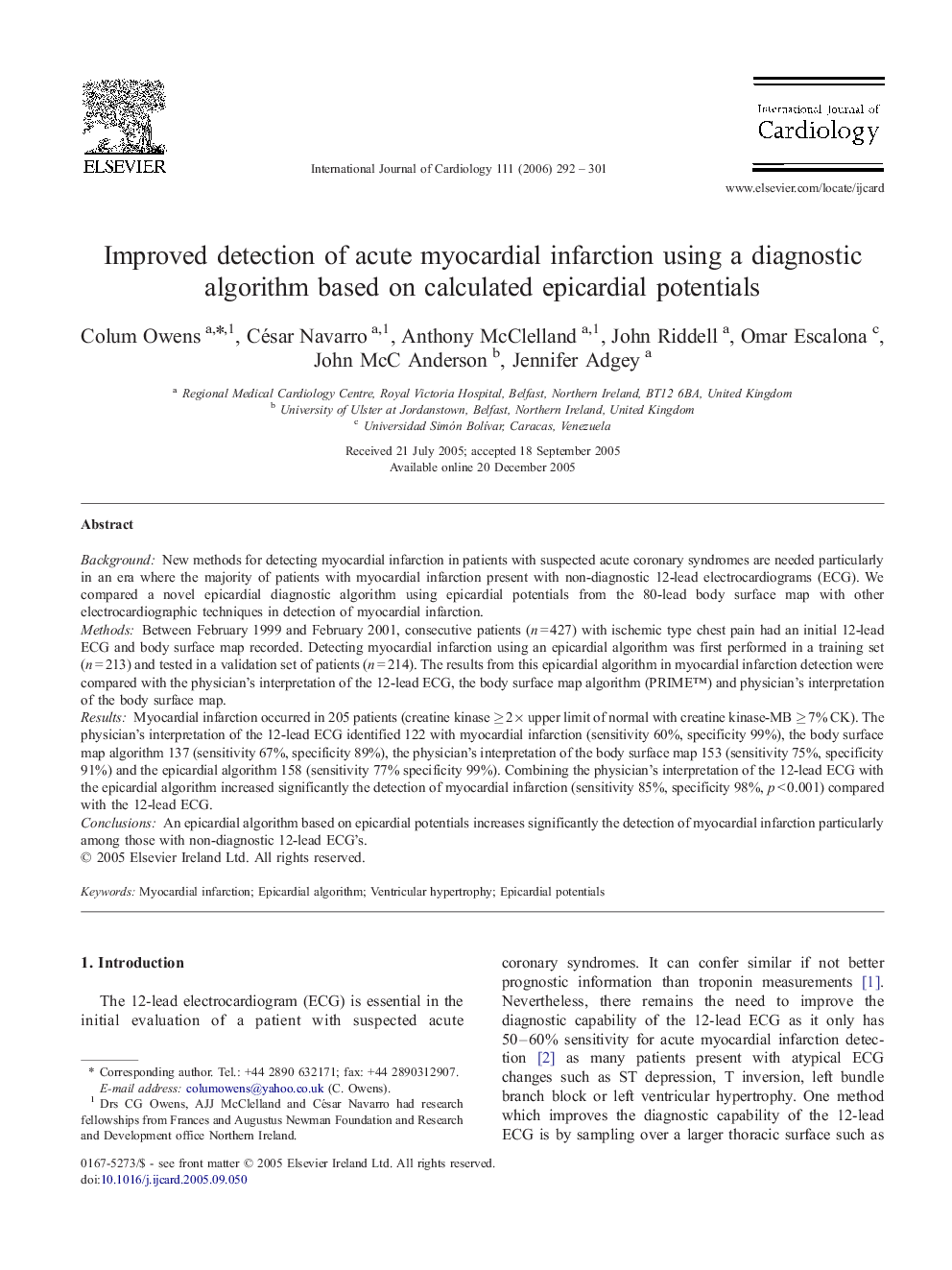| Article ID | Journal | Published Year | Pages | File Type |
|---|---|---|---|---|
| 2936091 | International Journal of Cardiology | 2006 | 10 Pages |
BackgroundNew methods for detecting myocardial infarction in patients with suspected acute coronary syndromes are needed particularly in an era where the majority of patients with myocardial infarction present with non-diagnostic 12-lead electrocardiograms (ECG). We compared a novel epicardial diagnostic algorithm using epicardial potentials from the 80-lead body surface map with other electrocardiographic techniques in detection of myocardial infarction.MethodsBetween February 1999 and February 2001, consecutive patients (n = 427) with ischemic type chest pain had an initial 12-lead ECG and body surface map recorded. Detecting myocardial infarction using an epicardial algorithm was first performed in a training set (n = 213) and tested in a validation set of patients (n = 214). The results from this epicardial algorithm in myocardial infarction detection were compared with the physician's interpretation of the 12-lead ECG, the body surface map algorithm (PRIME™) and physician's interpretation of the body surface map.ResultsMyocardial infarction occurred in 205 patients (creatine kinase ≥ 2× upper limit of normal with creatine kinase-MB ≥ 7% CK). The physician's interpretation of the 12-lead ECG identified 122 with myocardial infarction (sensitivity 60%, specificity 99%), the body surface map algorithm 137 (sensitivity 67%, specificity 89%), the physician's interpretation of the body surface map 153 (sensitivity 75%, specificity 91%) and the epicardial algorithm 158 (sensitivity 77% specificity 99%). Combining the physician's interpretation of the 12-lead ECG with the epicardial algorithm increased significantly the detection of myocardial infarction (sensitivity 85%, specificity 98%, p < 0.001) compared with the 12-lead ECG.ConclusionsAn epicardial algorithm based on epicardial potentials increases significantly the detection of myocardial infarction particularly among those with non-diagnostic 12-lead ECG's.
